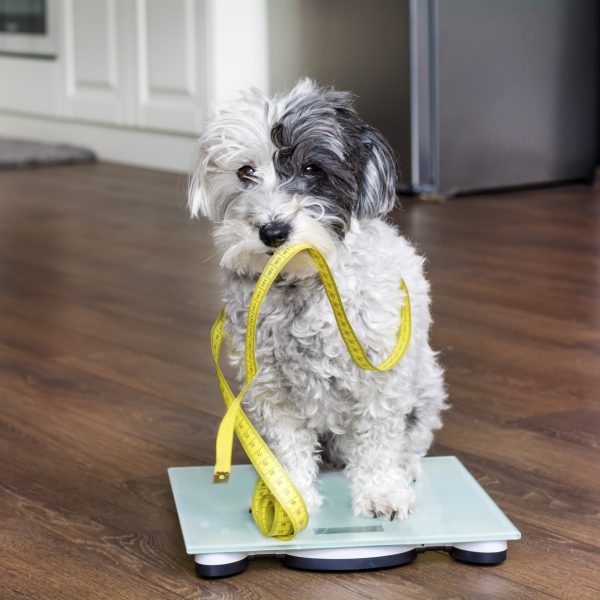Is Your Dog Overweight?
 Having an overweight dog is more common than you’d think. After all, who can say no to those “puppy eyes”? If a pup has put on a few pounds, owners don’t always notice. It’s a slow, creeping process. Over a few months, however, the weight can really add up. Being able to recognize the symptoms of dog obesity before it’s too late can prevent some serious health problems. Here are a few surefire ways to detect dog obesity, along with some dangers it presents.
Having an overweight dog is more common than you’d think. After all, who can say no to those “puppy eyes”? If a pup has put on a few pounds, owners don’t always notice. It’s a slow, creeping process. Over a few months, however, the weight can really add up. Being able to recognize the symptoms of dog obesity before it’s too late can prevent some serious health problems. Here are a few surefire ways to detect dog obesity, along with some dangers it presents.
3 Signs Your Dog Is Overweight
Many dogs suffer from obesity. In fact, almost 56% of dogs are obese in the US. Being able to curb a dog’s diet and increase their exercise at these points can drastically improve their health.
Additionally, starting the process earlier is simpler than if you caught it later on. Dogs have a few dead giveaways when it comes to determining obesity. Here are some signs your dog is overweight:
1. Body Shape
Veterinarians use a body score chart to determine whether dogs are overweight. By comparing your dog’s general shape to the dogs on the chart, vets can roughly gauge obesity levels. Dogs in the 1-3 range are typically underweight, with their ribs and pelvic bones protruding. These dogs have no visible fat.
The 4-6 range is where vets like to see dogs, with minimal fat and ribs showing clearly but not protruding too far. Their waists are still visible from above and their abdomens tuck. This range is the healthiest for dogs.
Dogs in the 6-9 range are considered overweight to obese. These dogs have a layer of fat over their ribs and they are difficult to see. Their waists are not visible from above, and their abdomens drag instead of tuck.
2. Breathing Trouble
Overweight dogs tend to have trouble keeping up during strenuous activity. As opposed to healthy panting, these dogs will stop moving altogether and lay down in order to catch their breath. Having additional layers of adipose tissue on top of the diaphragm and lungs makes expanding much more difficult.
This is a particular danger for Brachycephalic dogs that can already have respiratory problems stemming from their flat-faced or snub-nosed facial structure. When these dogs are overweight, it can further exacerbate already-existing breathing problems and cause more issues.
3. Restricted Activity
Dogs that have extra weight generally move around less than their more fit counterparts. In addition to their lungs having trouble expanding, these dogs are also in worse shape. Having more weight makes their pup bodies work that much harder for the same amount of distance.
As a result, many overweight dogs will avoid activity because it’s just too hard. So even though they want to play, they can’t bring themselves to run after that ball. If you don’t get started on a weight plan, your dog may start to experience the following health concerns.
2 Big Dangers of Dog Obesity
Being overweight doesn’t mean your dog will inevitably suffer from the next few health concerns, but it greatly increases the likelihood that they will. This list is by all means not all-inclusive, but these are some of the big dangers that obese dogs can face:
1. Joint Damage and Pain
¼ of overweight dogs have joint damage. Having extra weight putting pressure on their joints is painful, and can cause further problems down the line. For example, arthritis, slipped discs, and hip dysplasia can all result much earlier than expected from having extra weight. Being obese also causes difficulty with anesthesia, so having surgery for these issues is more dangerous overall.
2. Diseases
Being overweight can cause certain metabolic diseases, like canine diabetes, and other severe, life-threatening disorders. Having extra weight can lead to hypertension and heart disease, as well as liver malfunction. In addition, dogs with obesity have a higher risk of getting certain cancers.
What Should You Do if Your Dog is Obese?
If your dog falls in the 6-9 range, it’s time to start a weight plan. Getting their eating under control, and having them exercise significantly more can do wonders to shed the weight. It might be tough at first, but trimming down will greatly improve their quality of life. Helping your overweight dog get healthy will be more than worth the effort.
